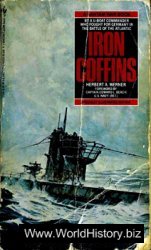During the summer of 1916 a remarkable discovery was made by the arabs of Guma, on the West side of the Libyan range of hills of Western Thebes.
These natives apparently for some time past had knowledge of the existance of isolated tombs in that remote part of the Theban necropolis, and from time to time they continued to plunder them of the few remains left by ancient tomb robbers.
During the years 1913 and 1914 the arabs found that the famous valley now known as GABBANAT EL QIRUD contained numerous votive offerings hidden under the larger boulders that cover the bed of the valley. From this source came much valuable material in the form of faience, bronze, and stone votive figures of fine Egyptian late New Empire art, which are now distributed throughout the principal museums of the world. This discovery led to a further and far more important find. At the head of the vaUey GABBANAT EL QIRUD and the smaller collateral valleys rock-cut tombs prove to be hidden in the faces of the cliffs and mountain ravines. Later investigation has proved them to be the lost burial places of the royal wives, princesses, and royal children of the Eighteenth Dynasty.
It was in 1916 during these illicit diggings that the arabs came upon the unrecorded and unique discovery comprising an untouched rock-cut tomb of three princesses or royal concubines of the reign of that most famous Egyptian king THOTHMES III. This remarkable tomb—it being the only royal burial ever discovered unplundered—was hidden in a rift high up at the head of the valley GABBANAT EL QIRUD, in a spot only accessible by long ladders from below, or by ropes slung from the cliff above into a rift which had been gradually worn into a sort of canyon by periodical torrential rains. Here they found cut in the bed of the ravine an opening giving access to a long narrow passage (some 17 meters in length), which led to a small burial chamber containing three burials of unique type. These burials were undisturbed since their interment, save for rain waters that had percolated through the filling of the passage and the collapse of the rock ceiling of the chamber. This had caused certain deterioration and breakage, and it appears that from the water infiltration all the objects in wood had been destroyed, and that only stone and metal had been preserved.
Eight or nine arabs were concerned in the plundering of these particular burials, and the objects were divided up among them. They entered the tomb by burrowing a small hole through the filling of the passage, which accounts for a great deal of the rough handling of the antiquities found. The heavier objects such as the larger alabaster vases and canopic jars, were reburied in the valley until opportunity occurred for their transport to the dealers.
DOCUMENT 30. Excerpt from letter of Winlock in Qurna to Lythgoe in New York (MMA Dept, of Egyptian Art)
Arthur Mace was a curatorial and expedition member of the MMA staff during the years 1906—14 and 1919—22.
From November 1922 into 1924, he assisted Carter in the excavation of the tomb of Tutankhamun.




 World History
World History









